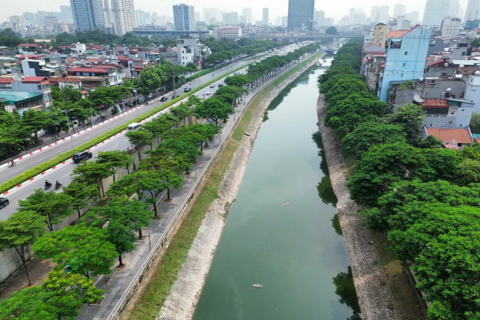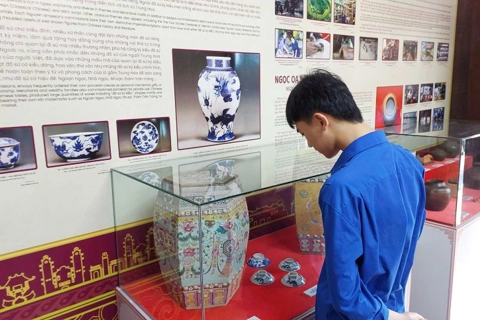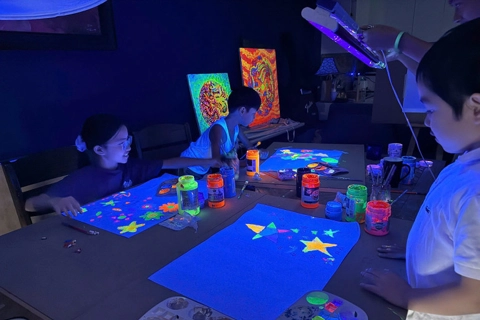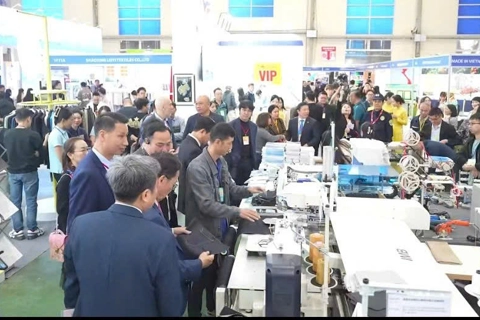Imprints of founder of Vietnamese photography
Photographer Nguyen Dinh Khanh (1874–1946) laid the foundation for Lai Xa photography, turning a purely agricultural village on the outskirts of Hanoi into the cradle of Vietnamese photography.
THE HANOI TIMES — Photographer Nguyen Dinh Khanh, also known as Khanh Ky, was a successful businessman and humble patriotic activist who made important contributions to the cause of national liberation.
Tran Thi Thu Dong, President of the Vietnamese Association of Photographic Artists, spoke about Nguyen Dinh Khanh at a seminar this week to commemorate his life and career, his 151st birthday (1874-1946), and the 72nd anniversary of Vietnam's Traditional Day of Photography (March 15, 1953-2025).
Experts at the seminar expressed their gratitude to Khanh Ky and praised his great contributions to Vietnamese photography and the revolutionary cause of the nation.
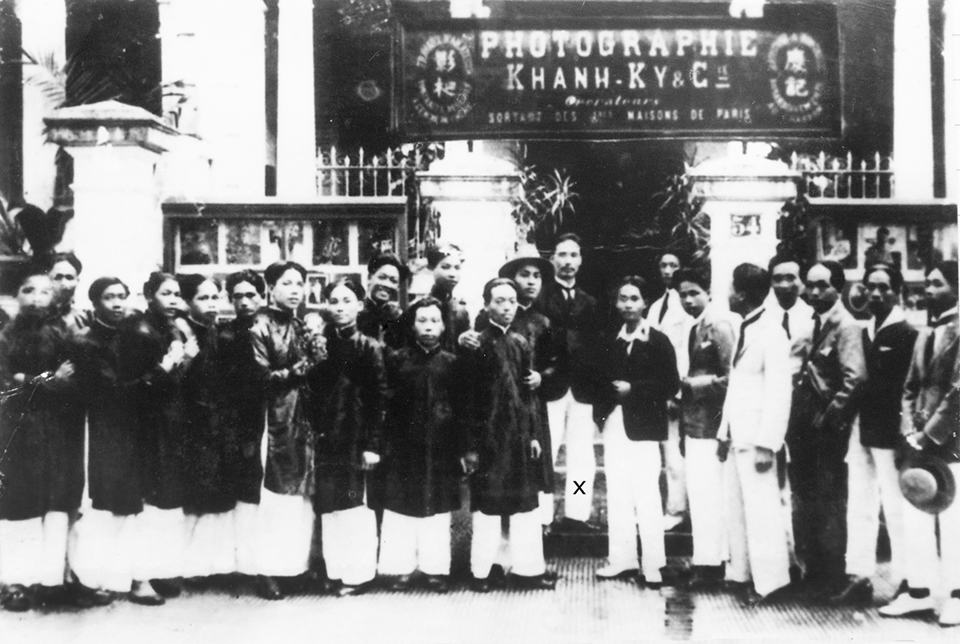
Nguyen Dinh Khanh (marked X) and photographers from Lai Xa Village. Photo: Archive
Vietnam was first introduced to photography in the late 19th and early 20th centuries, when the nation was still mired in the prolonged darkness of French colonial rule, according to Dong.
With his talent, intelligence, and desire to learn, he quickly mastered the techniques, founded the renowned Khanh Ky Photo Studio, and laid the foundation for the development of Vietnamese photography in its early years.
After working as an apprentice in a Chinese man's photo studio in Hanoi, Khanh opened his own called Khanh Ky on Hang Da Street at the age of 18. And then his reputation spread to Haiphong and Saigon, and on to France, Germany, and China.
Khanh later returned to his home village of Lai Xa (Hoai Duc District) to teach photography to the villagers and encourage them to open their own studios. More and more studios of Lai Xa people popped up in Vietnam and abroad.
There was a time when about 80% of the households in the village practiced photography, and there were about 150 studios owned by Lai Xa people nationwide, accounting for 70% to 80% of the studios in Hanoi and Saigon.
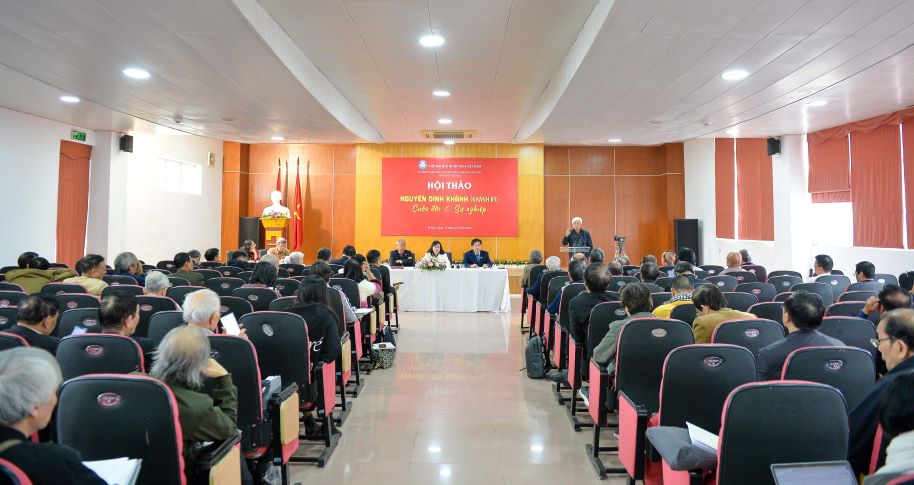
A seminar on the life and career of photographer Nguyen Dinh Khanh. Photo: Vietnam Association of Photographic Artists
Photography then became a traditional trade, bringing a prosperous life to many generations of Lai Xa villagers. Lai Xa Photography Village became famous at home and reached other countries, confirming the position of Vietnamese photography on the world map.
Tran Thi Thu Dong said Lai Xa is the "capital of photography" in Vietnam and Nguyen Dinh Khanh deserves to be honored as the founder of the village craft, the one who paved the way for professional photography in the country.
During his time in France, Khanh was an active patriotic activist, an important member of the Council of Fellow Compatriots founded by reformists Phan Chau Trinh (1872-1926) and Phan Van Truong (1876-1933), an organization that gathered Vietnamese patriots in France.
Remarkably, Khanh taught photography to the young man Nguyen Ai Quoc, who later became Vietnam's President Ho Chi Minh. It was photography taught by Khanh that helped Nguyen Ai Quoc to have another means of livelihood to support his vibrant revolutionary activities in France.

The funeral of reformist Phan Chu Trinh, which led to nationwide protests calling for an end to French colonial rule. Photo by Nguyen Dinh Khanh.
Khanh was also a generous supporter of the Vietnamese Patriots Group in Paris, making an important financial contribution to the sustenance and development of the movement to fight for national independence.
Khanh was a master of journalistic and artistic photography who contributed to the country and the Vietnamese revolution, said photographer Chu Chi Thanh, former president of the Vietnamese Association of Photographic Artists.
Although his photographs of the funeral of Phan Chu Trinh, which sparked widespread protests throughout the country demanding an end to French colonialism, of several kings of the Nguyen dynasty, of Laos and Cambodia, and of the Saigon waterfront are popular in textbooks, the press, and educational materials, Khanh's career remains little known.
"He is a talented photographer with many valuable art and press photographs. He successfully ran a photography business, built a strong Lai Xa photography group, and worked as an excellent press and art photojournalist in France and Indochina in the first half of the 20th century. He's a rare talent," Thanh said.
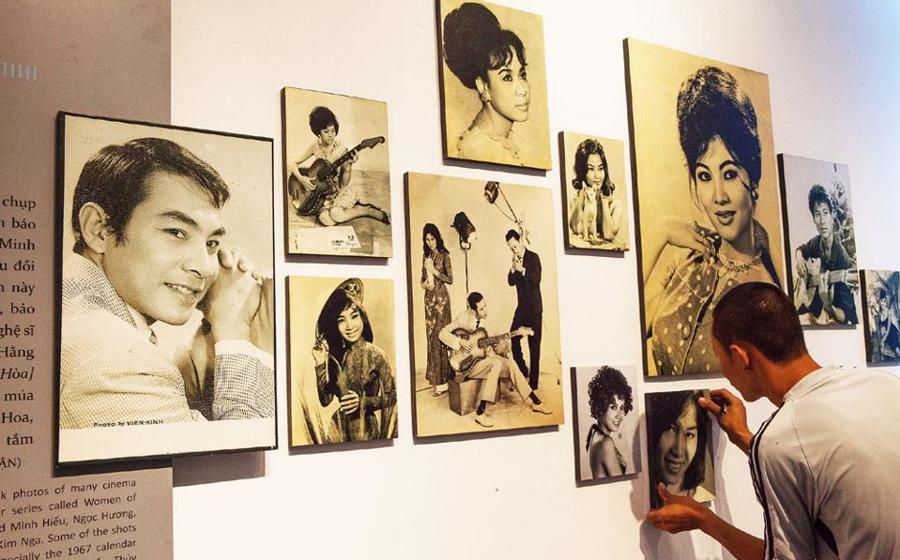
Photo exhibition at the Lai Xa Photography Museum. Photo: Anh Tuan/The Hanoi Times
Khanh, along with Dang Huy Tru (1825-1874), laid the foundation for Vietnamese photography, according to photographer Hoang Kim Dang.
"Khanh Ky's name and career are recorded in the Vietnam Encyclopedia. Lai Xa people are indebted to him and his great contributions and honor him as the ancestor of the trade village," said Dang.
Nowadays, the studios in Lai Xa Village often have the words "Ky" or "Lai" in their names, such as An Ky, Thinh Ky, Thien Ky, Phuc Lai, and Kim Lai, which are meant to honor Khanh or Khanh Ky, and promote the reputation of the village.





